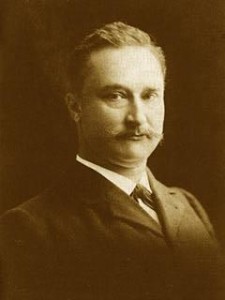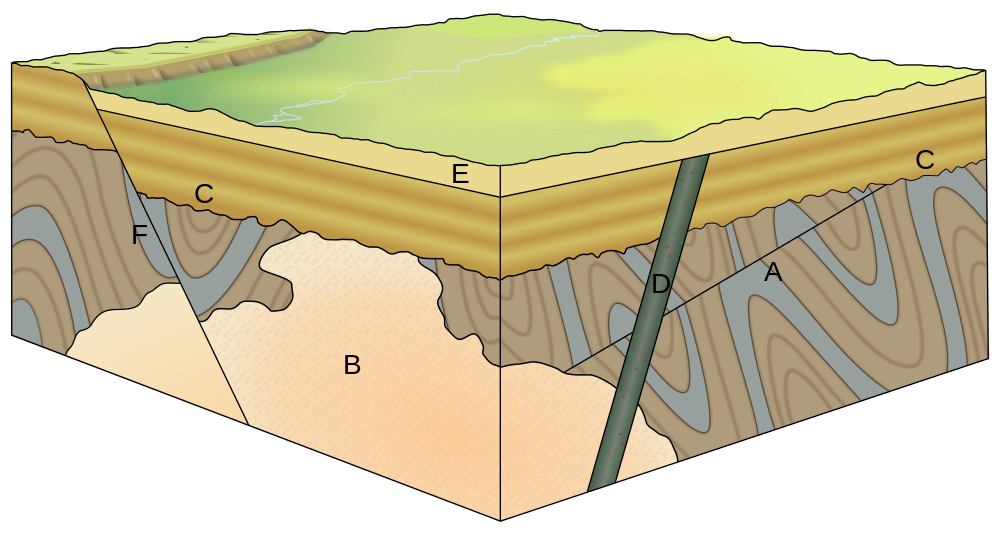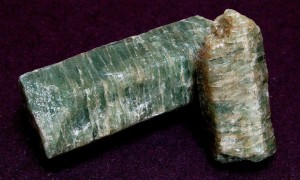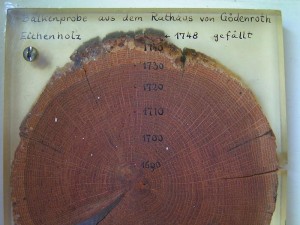Part I: An Introduction to Paleoanthropology
1. Paleoanthropology

WHAT IS PALEOANTHROPOLOGY?
Paleoanthropology, a subdiscipline of anthropology, is the study of extinct primates. While the majority of researchers doing this kind of work are anthropologists, paleontologists (within the discipline of geology) may also study fossil primates. The primary method used by paleoanthropologists is the analysis of fossil remains. However, they increasingly rely on other scientific disciplines to gain a better understanding of the environmental forces that played a role in our evolution, as well as the formation of the fossil record. For example, geologists identify processes of sedimentation and fossilization, and date fossils and their associated sediments using a variety of techniques (see DATING TECHNIQUES below). A variety of disciplines are involved in helping to reconstruct ancient environments and biological communities. Paleontologists identify ancient floral and faunal fossils. Palynologists analyze particles in ocean and lake cores, as well as pollen in terrestrial sediments (see Figure 1.2), to determine the predominant flora in a given area at a particular time. Taphonomists help determine how fossil assemblages were formed.
In the 1920s, Raymond Dart proposed that early hominins (bipedal primates, like ourselves) found in South African caves had inhabited those caves. In addition, he interpreted puncture wounds found in some of the skulls as evidence that those hominins made and used weapons for hunting and male-male aggression. The taphonomist C. K. Brain argued in more recent times that either hominins fell through cracks into subterranean caves after having been cached in trees by leopards, or their bones were dragged in by rodents, such as porcupines, for gnawing. We now realize that while those early members of our tribe likely used simple tools, they were not big-game hunters or warmongers (see Chapter 15 for more information).

HISTORY OF THE DISCIPLINE
While paleoanthropology, as a formally recognized science, is fairly recent, questions and beliefs related to our origins extend back to the earliest members of our species and possibly even earlier. All modern humans living in traditional (e.g., hunter-gatherer bands, tribes, or chiefdoms) or state-level societies have a set of beliefs associated with their origins. However, any ideas that fall outside the realm of science are part of a culture’s religion and are termed creation myths.
The most influential fields to have contributed to the science of paleoanthropology are geology, biology, and archaeology. Geologists (even those who were not recognized as such, e.g., Charles Darwin) are primarily responsible for the realizations that (1) the earth is ancient, and it formed via natural processes; (2) the earth was originally covered with water, and life began in that “primordial sea”; (3) life on earth originated with simple forms, with some descendent species becoming more complex over time, as can be seen in the fossil record; (4) species change or go extinct in response to environmental change; (5) new species are the result of a portion of a population adapting to new or changed environmental conditions; (6) the same forces, such as volcanic eruptions, that operate today are those that shaped the earth and caused changes in the fossil record via extinctions and speciation events; and (7) layers and deposits are continually developing or eroding so that organisms are buried and fossils come to light, respectively. The idea that the same forces that operate today are those that shaped the earth and caused changes in the fossil record is termed uniformitarianism. Charles Lyell coined the term and is heralded as the father of modern geology. He greatly influenced Darwin and thus contributed to Darwin’s synthetic view of the evolution of life on earth. Geologists use various methods to date fossils or fossil-containing sediments and have developed a chronology (i.e., a timeline) for the earth as a whole, as well as depositional layers in areas where fossils have been discovered.
Biologists and geneticists have refined the theory of evolution by means of natural selection by determining how traits are inherited. Scientists from a variety of disciplines have classified the known species of the world based on evolutionary relationships (also see Chapter 2).

Archaeology has played and continues to play a strong role in paleoanthropology via the study of the archaeological record, that is, the record of past human activity via cultural remains and anthropogenic (human-induced) changes to the environment. Thomas Jefferson has been referred to as the first archaeologist, in that his methods were more scientific than his fellow antiquarians. Antiquarians tended to be after the “goods,” without regard for careful interpretation of the archaeological record. Most would be considered looters by today’s standards. They took items of great cultural and historical significance for personal or museum collections. Some items have been returned to their countries of origin, but the damage is done when the archaeological record is disturbed or destroyed. Once an item has been removed from the area where it was found, scientists can no longer learn from its context, for example, from associated artifacts or the location of the artifact in geographic space and time.
Archaeologists and geologists played a key role in recognizing that “stones and bones” were evidence of earlier hominin activities. In addition, the fact that some of the bones were from extinct animals supported the idea that humans had been around for a long time. Archaeological methods of excavation and analyses, such as the provenience (i.e., the three-dimensional location within a site) and association of artifacts (i.e., portable human-made or altered objects), help archaeologists and paleoanthropologists reconstruct past behavior. Just as taphonomy plays a role in determining how fossil assemblages came to be, it is also useful for archaeological assemblages.

According to Merriam-Webster Online, the first known use of the term “paleoanthropology” occurred in 1916. However, the earliest paleoanthropologists were not labeled as such and came from a variety of occupations, such as anatomists and physicians. The first hominin fossils discovered were the neandertals in the 1800s. However, paleoanthropologists disagreed about whether neandertals were ancestors of humans or were modern humans. Eugène Dubois was the first person to intentionally search for a fossil hominin. He went to Asia with the sole purpose of finding evidence that humans evolved there, as was the reigning belief in Western Europe. In 1891, he discovered a skull cap (known as a calotte) and femur on the Solo River in Trinil, Java. More discoveries in China and Java during the first half of the 20th century supported the Asian origin theory until Raymond Dart and his contemporary, Robert Broom, began discovering much more ancient material in South African quarries and caves. Further discoveries by Louis and Mary Leakey in East Africa cemented Africa as the birthplace of humanity, and the race to find human origins and ancestors was on.

RECONSTRUCTING PALEOENVIRONMENTS
A variety of tools can be used to determine the type of environment past species occupied. As mentioned, paleontologists can use floral and faunal analyses and what they know about ancient species or their extant relatives to determine environment type, for example, the presence of aquatic-, grassland-, and/or forest-dwelling species. Palynologists examine particulates in aquatic and terrestrial strata (i.e., layers or sediments) to do the same, primarily focusing on floral analyses. A variety of isotopic tools can be used to categorize floral and/or faunal communities at a given site, such as hydrogen, oxygen, and carbon isotope fractionation and nitrogen isotope ratios. For example, calcium-rich remains such as eggshells, bones, and teeth can be analyzed isotopically to determine what types of vegetation those animals consumed and hence, the type of environment in which they lived. The strontium-to-calcium ratio in bones and teeth can be used to determine the amount of animal versus plant matter in the diet. Based upon that technique, scientists now believe that paranthropines, a group of hominins in East and South Africa dating from the early- to mid-Pleistocene (see Chapter 16), ate some animal matter. However, whether they were consuming insects or larger prey is not known.
For more information on the aforementioned methods, consult Henke W, Tattersall I. 2006. Handbook of paleoanthropology. New York (NY): Springer.
DATING TECHNIQUES
Dating techniques fall into two categories, relative and absolute. Relative dating techniques (1) ordinally rank strata relative to one another through time (see Figure 1.6) or (2) use what is known about deposits in one area, such as volcanic ash or lava, to relatively date deposits in another area. Jefferson is credited with the Law of Superposition, which posits that as you go deeper into the earth, layers get older, as long as strata have not been disturbed due to human, animal, or geological activity. Thus artifacts or fossils found in one layer are either older or younger than those in a deeper or shallower layer, respectively. Absolute dating techniques use similarities in (1) floral and faunal assemblages or (2) sedimentary and/or chemical composition of deposits in order to match those of unknown age with those of known age and/or order the progression of environments, organisms, and climatic and geological activity within or between regions.

Absolute or chronometric dating techniques yield approximate dates in years BP (before the present) or BCE (before the Common Era). BCE and CE (Common Era) retain the BC/AD system of dating without the religious connotation. An abbreviated way to refer to a certain number of years ago, especially when considering the fossil record, is kya or mya (thousands or millions of years ago, respectively), thus eliminating all of those ungainly zeroes! While BP makes more sense in that you do not need to add 2,000+ years to the date, most people are accustomed to the BC/AD system, thus explaining the common use of BCE. The best-known absolute dating techniques are radiometric dating methods, for example, Carbon-14 (14C). They are used to measure the half-life or replacement of radioactive elements in organic or fossil material or the layers in which they are found. Since those methods are time-limited and/or context-specific, the most appropriate technique(s) must be chosen based on a variety of parameters. The following techniques use radioactive decay for dating purposes:
[NOTE: For more information on the following methods, consult Henke and Tattersall (2006), Handbook of Paleoanthropology; and/or Davis (2009), “Other Dating Methods”: https://web.archive.org/web/20190827190129/http://remf.dartmouth.edu/imagesindex.html.]
Carbon-14 dating (≤60 kya) measures the remaining 14C in organic materials (i.e., carbon-containing). Since plants use carbon dioxide for photosynthesis, they contain all three isotopes of carbon (12C, 13C, and 14C) in the approximate ratios present in the atmosphere. Animals eat plants and thus, at any particular time, they will all have approximately the same amount of 14C. Once they die, they no longer accumulate carbon. The level of the more stable 12C can then be compared to the remaining 14C in organic remains to determine when they died. The half-life of 14C is ~5,700 years, that is, half of the 14C will have been lost in a specimen in that amount of time.
Uranium series dating (≤500 kya) examines the relative levels of two elements, Uranium-234 and Thorium-230, resulting from the former’s decay into the latter. It is used to date calcium carbonate in coral and shells.
Potassium-Argon (K/Ar) and Argon-Argon (Ar/Ar) dating both measure the ratio of one isotope to another via the process of radioactive decay, Potassium-40 → Argon-40 and Argon-40 → Argon-39, respectively. They are often used to date volcanic layers but can also be used on other soil components, such as clay. While the age range for both methods may be reported to be unlimited, K/Ar dating is not useful for “young” materials because the half-life of potassium is so long—1.26 billion years.
Other methods that also rely on radioactivity are:
Electron spin resonance (ESR) (up to “a few” mya) examines the pattern of electrons that have “spun” out of their original location in mineral compounds (e.g., calcium compounds), leaving empty spaces behind, due to exposure to environmental radiation. Tooth enamel is the most useful application of ESR in paleoanthropology, but ESR can also be used to date quartz particles in sediments (Wagner 2006).
Fission track dating (20 mya—>10 kya) measures the number of “tracks” (pitting) in mineral compounds that result from the energy released when Uranium-238 spontaneously fissions over time. This method can be used to date a variety of minerals, such as mica, as well as products of volcanic (e.g., obsidian) and meteoric activities (Davis 2009; Wagner 2006).

Thermoluminescence (300–1 kya) measures radioactive decay particles in mineral compounds. It is useful for compounds that were exposed to intense heat (e.g., volcanic eruption) at some known point in time, when the “radioactive clock” was reset to zero and decay began anew. Thermoluminescence can be used to date artifacts (e.g., ceramics) and features (e.g., hearths), as well as products of sedimentation (e.g., speleothems, which are mineral deposits that form in caves) and volcanic activities (e.g., tephra, which are fragments from volcanic eruptions) (Davis 2009).
The following methods do not rely on radioactive activity but rather organic processes:
Dendrochronology uses tree rings in fossil or charred wood to date artifacts or fossils found in association with the wood. Each year, trees produce a new layer of peripheral tissue. When climatic conditions are favorable, more tissue is deposited and a thicker ring results, and vice versa. A cross-section of the tree tells the history of its growth (see Figure 1.8). However, in order to use dendrochronology as a dating method, a chronology (temporal record) needs to be constructed for a given region, in this case a map of the annual growth rate back through time. Living trees and dead wood can be used as long as there is overlap in ring patterns between them.

Amino acid racemization (2 mya–2 kya ± 15%) measures the ratio of two forms of an amino acid, one produced while an organism is alive and the accumulation of a second form after death. If the ambient temperature at the time of death can be approximated, the specimen can be dated and vice versa (Davis 2009).
Paleomagnetism (hundreds of thousands–millions of years, Fagan 2000) measures past changes in the earth’s paleomagnetic fields that are preserved in some common minerals found in rocks and sediments. Since scientists have established a chronology of those changes, the materials can then be given approximate dates as to when they formed. When paleomagnetism is used to date archaeological materials, it is termed archaeomagnetic dating.
Obsidian hydration (100–1 mya) is used to date volcanic glass, that is, obsidian, by examining the amount of hydration that has occurred due to exposure to the elements. It is useful in dating obsidian artifacts as well as glacial and volcanic activities (Davis 2009).
Surface or Cosmogenic Nuclide Exposure Dating measures the amount of time that rocks have been exposed to the elements. It can be used to date glacial, lava, and rockslide movements and damage from extraterrestrial activities (e.g., solar flare-ups or meteorites) (Davis 2009; Wikipedia contributors 2015i).
ADDITIONAL STUDENT RESOURCES
Henke W, Tattersall I, editors. 2006. Handbook of paleoanthropology. New York (NY): Springer; [accessed 2015 Aug 15]. http://www.evolbiol.ru/large_files/handbook_paleoanthropology.pdf.

